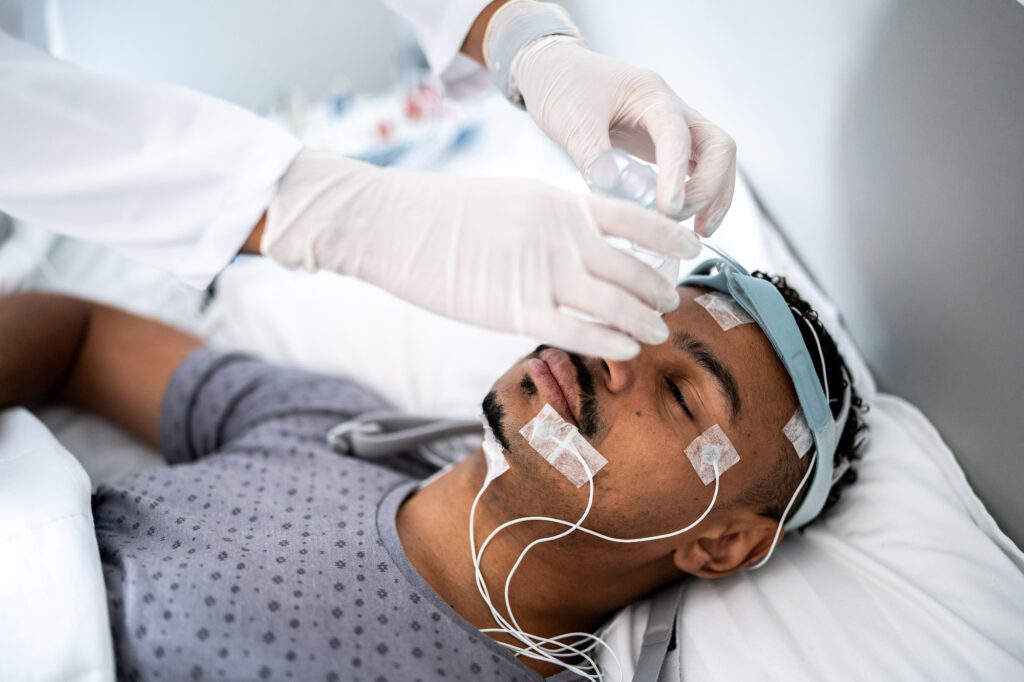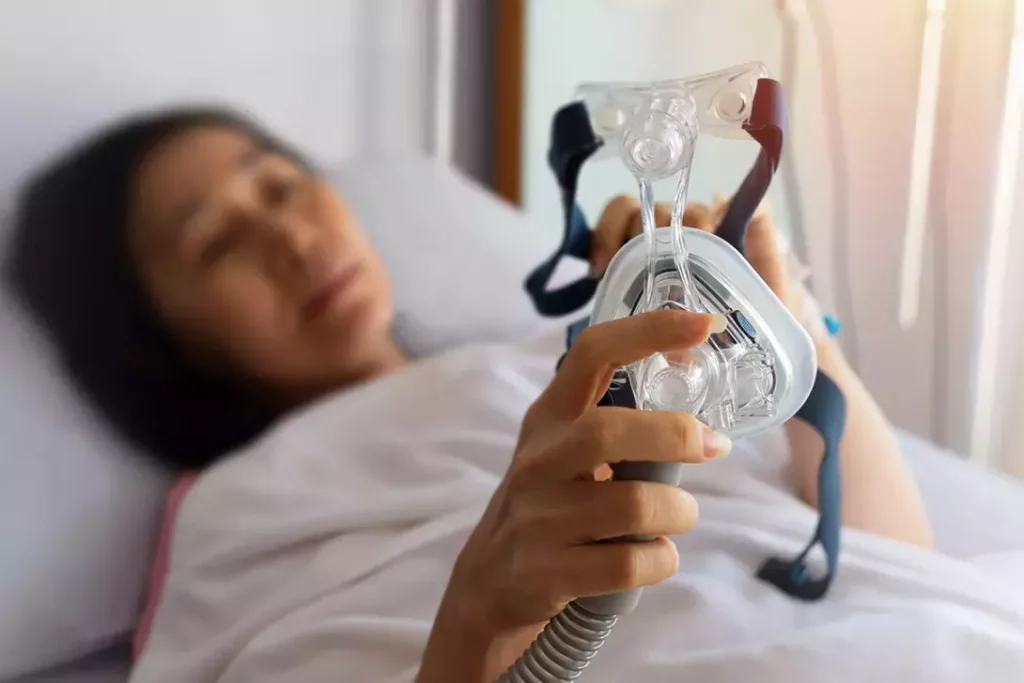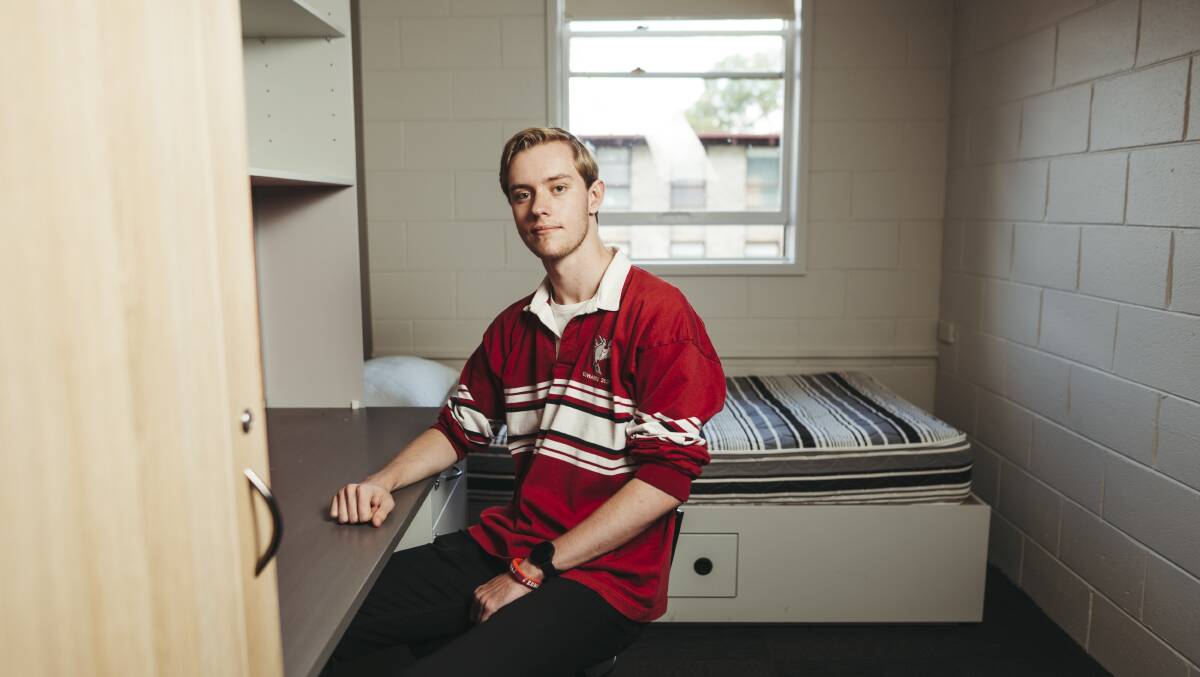Sleep disorders affect millions of Australians, impacting their daily lives, health and productivity. Home sleep studies in Canberra offer a practical solution for diagnosing conditions like obstructive sleep apnea from the comfort of one’s own bed.
These diagnostic tests use advanced monitoring equipment to track vital signs and sleep patterns throughout the night. The convenience of conducting sleep studies at home eliminates the unfamiliarity of hospital environments, allowing for more natural sleep patterns and accurate results.
Diagnosing and treating sleep disorders is crucial for:
- Reducing cardiovascular health risks
- Preventing daytime fatigue and accidents
- Improving mental wellbeing
- Enhancing work performance
- Maintaining healthy relationships
This comprehensive guide explores the entire process of home sleep studies Canberra – from initial GP referrals through to diagnosis and treatment options. Readers will discover:
- How home sleep studies work
- The step-by-step testing procedure
- What to expect during the study
- Available treatment pathways
- Medicare coverage and costs
Through partnerships with leading healthcare providers like Air Liquide Healthcare, Canberra residents have access to validated diagnostic services and effective treatment solutions for sleep disorders. These services are supported by qualified Sleep Physicians who ensure accurate interpretation of results and appropriate treatment recommendations.
In addition to Canberra, similar home sleep study services are also available in Perth, Brisbane, and Melbourne.
Understanding Home Sleep Studies
A home-based sleep study is a diagnostic tool used to monitor sleep patterns and breathing disturbances while the patient sleeps in their own bed. This portable monitoring system collects important physiological data using specialised equipment to identify potential sleep disorders, especially obstructive sleep apnea.

How Home Sleep Studies Work
Home sleep studies work by using non-invasive sensors that are placed on the body to record important sleep information. Here are the key components involved in the process:
- Nasal Cannula: This device measures airflow through the nose and mouth.
- Chest Belt: The chest belt records breathing effort and respiratory movements.
- Pulse Oximeter: This sensor monitors blood oxygen levels and heart rate.
- Position Sensor: The position sensor tracks changes in sleep position throughout the night.
These sensors send data to a small recording device that stores information about various aspects of sleep, including:
- Breathing patterns
- Oxygen saturation levels
- Heart rhythm
- Body position
- Snoring intensity
Read more at: Do You Need a Sleep Test Top Sleep Study Services in Canberra
The Difference Between Home Sleep Studies and Hospital-Based Studies
The main distinction between home sleep studies and traditional in-hospital polysomnography lies in the location of the test and how it is conducted. Here are some key differences:
- Testing Environment: Home sleep studies are conducted in the patient’s home, while hospital-based studies take place in a medical facility.
- Monitoring Complexity: Hospital studies use advanced equipment and have a technician present at all times, whereas home studies use simpler monitoring devices that patients can operate on their own.
Benefits of Home Sleep Studies
Home sleep studies offer several advantages over traditional methods:
- Comfort: Patients can undergo testing in their familiar environment, which may lead to more accurate results. Read more about comfort at https://www.vu.edu.pk/pages/bsbiotech
- Convenience: Home studies eliminate the need for overnight stays in hospitals, making it easier for individuals with busy schedules or travel constraints.
- Cost-Effectiveness: In some cases, home sleep studies may be more affordable than hospital-based tests.
When Are Home Sleep Studies Recommended?
Home sleep studies are typically recommended for individuals who exhibit symptoms of sleep-disordered breathing but do not require extensive monitoring or additional interventions. Some common indications include:
- Loud snoring
- Witnessed apneas (pauses in breathing)
- Excessive daytime sleepiness
- Unexplained hypertension (high blood pressure)
It’s important to note that not all cases of suspected sleep apnea can be accurately diagnosed through home studies alone. Certain factors such as obesity, complex medical conditions, or specific treatment needs may warrant further evaluation through in-lab polysomnography.
If you suspect you have a sleep disorder or have been referred for a sleep study by your healthcare provider, it’s essential to discuss with them whether a home-based approach would be suitable for your situation.

For those considering a more tailored approach to their sleep health, home sleep studies in Sydney, Hobart, or Adelaide could be beneficial options.
The Patient Pathway for Home Sleep Study in Canberra
The journey toward a home sleep study in Canberra begins with a visit to a GP or medical practitioner. During this consultation, the doctor assesses symptoms such as:
- Persistent snoring
- Daytime sleepiness
- Morning headaches
- Witnessed breathing pauses during sleep
Based on these symptoms, the GP provides a referral to a sleep specialist or directly to an approved sleep study provider like Air Liquide Healthcare.
A qualified sleep physician reviews each referral through a systematic triage process. This assessment considers multiple factors:
- Medical history
- Current symptoms
- Pre-existing conditions
- BMI (Body Mass Index)
- Sleep questionnaire results
Patients typically qualify for home sleep studies when they:
- Present straightforward symptoms of sleep disorders
- Have sufficient mobility to manage equipment
- Can follow written instructions independently
- Live in a stable home environment
Hospital-based studies are recommended for patients with:
- Complex medical conditions
- Significant cardiac issues
- Neuromuscular disorders
- Requirements for additional monitoring
Medicare covers the cost of home sleep studies for eligible patients under specific MBS guidelines. Private health insurance may provide additional coverage options for both diagnostic testing and subsequent treatment. Click here to find more about treatment.
Step-by-Step Process of a Home Sleep Study
The home sleep study process begins with scheduling an appointment at the Canberra Hospital Respiratory Physiology Laboratory. Patients receive specific preparation instructions, including wearing loose-fitting, comfortable clothing to accommodate sensor placement.
Equipment Fitting Session
During the equipment fitting session, trained technicians attach several non-invasive monitoring devices:
- A small nasal cannula to measure airflow
- Chest and abdominal bands to record breathing movements
- A finger probe for oxygen saturation monitoring
- Electrodes on the chest for heart rate tracking
- Position sensors to detect sleep posture changes
The setup process takes approximately 30-45 minutes, during which technicians demonstrate proper equipment handling and provide clear instructions for home use. Patients receive a detailed guide covering:
- Equipment operation and troubleshooting
- Optimal sensor placement
- Recording start and stop procedures
- Emergency contact information
Conducting the Sleep Study
The actual sleep study occurs in the patient’s home environment, allowing for a more natural sleep experience. The monitoring equipment automatically records data throughout the night, tracking:
- Breathing patterns and potential interruptions
- Blood oxygen levels
- Heart rate variations
- Body position changes
- Sleep duration and quality
Patients simply wear the prescribed sensors while sleeping in their own bed, following their regular evening routine. The recording device stores all collected data for analysis by sleep specialists the following day.
What to Expect During and After the Study
During the Study
The attachment of sensors for a home sleep study creates minimal physical sensations. Patients typically report feeling a slight pressure from the nasal cannula and finger probe, while the chest and abdomen belts remain lightweight and adjustable for comfort. The electrodes on the chest might cause mild awareness initially, though most patients adapt quickly during their sleep.
During the night, the portable monitoring device continuously records essential physiological data:
- Blood oxygen saturation levels
- Heart rate variations
- Breathing patterns and effort
- Body position changes
- Snoring intensity
After the Study
The collected data undergoes thorough analysis by qualified Sleep Physicians who examine specific markers:
- Number of breathing pauses per hour
- Duration of oxygen level drops
- Sleep position impact on breathing
- Heart rate fluctuations
Results become available within 7-10 business days. The Sleep Physician provides a detailed report identifying:
- Presence and severity of sleep disorders
- Impact on sleep quality
- Specific breathing pattern abnormalities
- Oxygen desaturation events
Based on the diagnostic findings, the Sleep Physician develops a personalised treatment plan. This might include CPAP therapy initiation, lifestyle modifications, or referral to additional specialists. The treatment recommendations consider individual factors such as severity of symptoms, lifestyle requirements, and medical history.
Diagnosing Obstructive Sleep Apnea (OSA) Through Home Sleep Studies
Obstructive Sleep Apnea presents through distinct symptoms that often prompt individuals to seek medical attention. The most common indicators include:
- Loud, persistent snoring
- Witnessed breathing pauses during sleep
- Morning headaches
- Excessive daytime sleepiness
- Difficulty concentrating
- Irritability and mood changes
Home sleep studies utilise sophisticated monitoring equipment to detect and measure airway obstructions. The diagnostic devices track specific physiological changes that occur during sleep-disordered breathing:
- Oxygen desaturation – drops in blood oxygen levels
- Respiratory effort – chest and abdominal movement patterns
- Airflow limitations – reduced or blocked breathing
- Sleep position – impact on breathing patterns
Sleep physicians analyse the collected data to determine the presence and severity of OSA. The analysis focuses on the Apnea-Hypopnea Index (AHI), which measures the number of breathing interruptions per hour of sleep:
- Mild OSA: 5-15 events per hour
- Moderate OSA: 15-30 events per hour
- Severe OSA: >30 events per hour
Research validates home sleep studies as accurate diagnostic tools for OSA. Studies demonstrate comparable results between home testing and laboratory-based polysomnography when conducted under proper medical supervision. Sleep physicians in Canberra use standardised scoring criteria and clinical guidelines to ensure reliable diagnosis and appropriate treatment recommendations.
Treatment Options Following Diagnosis
Positive Airway Pressure (PAP) therapy is the primary treatment for obstructive sleep apnea. This non-invasive method uses a mask to deliver pressurised air, preventing the airway from collapsing during sleep.
CPAP Therapy Initiation Process:
- Initial consultation with sleep specialists
- Mask fitting and pressure calibration
- Equipment demonstration and usage instructions
- Trial period to assess comfort and effectiveness
Air Liquide Healthcare in Canberra offers comprehensive CPAP therapy programs, which include:
- Personalised Equipment Selection: Various mask styles and sizes, different CPAP machine models, comfort accessories and humidification options
- Professional Titration Services: Remote pressure adjustments, data monitoring and analysis, fine-tuning for optimal treatment
Ongoing Support Services:
- Regular equipment maintenance checks
- Mask replacement programs
- Progress monitoring appointments
- Data analysis and therapy optimisation
- Technical support and troubleshooting
The success of CPAP therapy depends on how well patients follow the treatment plan and use the equipment correctly. Sleep specialists collaborate closely with patients to address any issues, make adjustments, and ensure maximum benefits from the treatment. Regular follow-up appointments are scheduled to track progress and make necessary changes for better therapeutic outcomes.
Conclusion
Sleep disorders significantly impact daily life, yet many individuals hesitate to seek professional help. The accessibility of home sleep studies in Canberra removes traditional barriers to diagnosis, offering a comfortable and convenient alternative to hospital-based testing.
The path from diagnosis to treatment follows a structured approach:
- Initial GP consultation to discuss sleep-related symptoms
- Home sleep study referral and equipment setup
- Professional analysis of results by qualified Sleep Physicians
- Personalised treatment plans, including CPAP therapy when appropriate
Anyone experiencing these symptoms should consider a sleep assessment:
- Loud or chronic snoring
- Daytime fatigue and sleepiness
- Morning headaches
- Difficulty concentrating
- Observed breathing pauses during sleep
Canberra residents have access to comprehensive sleep disorder management through established healthcare providers. These services combine medical expertise with advanced diagnostic technology, ensuring accurate diagnosis and effective treatment outcomes.
The journey to better sleep starts with a simple conversation with a GP. Local sleep specialists stand ready to guide patients through each stage of diagnosis and treatment, supporting them towards achieving restful, restorative sleep and improved quality of life.
Take action today – speak with a healthcare provider about arranging a home sleep study in Canberra.

